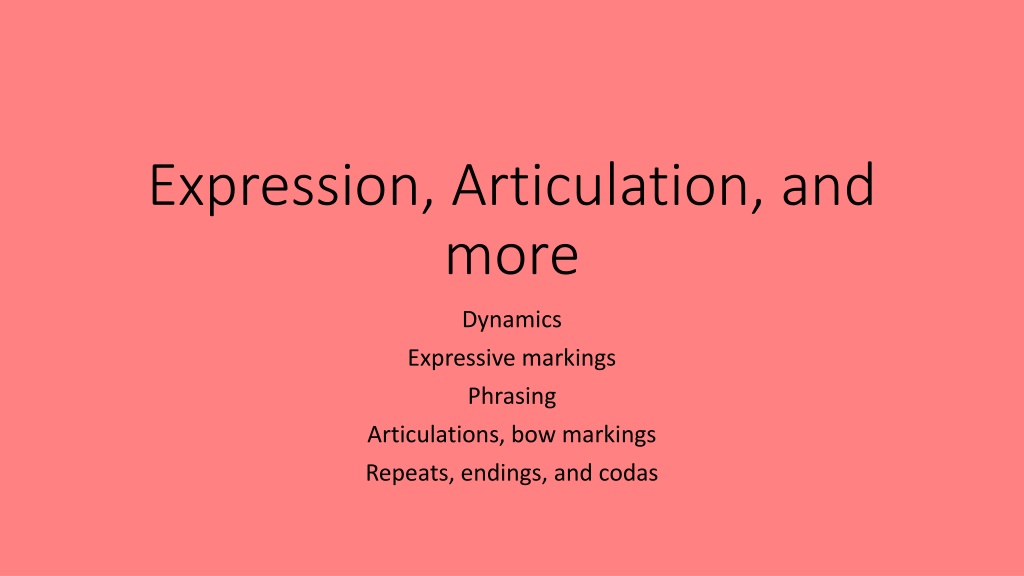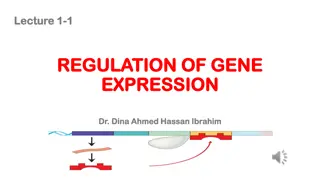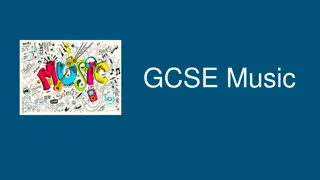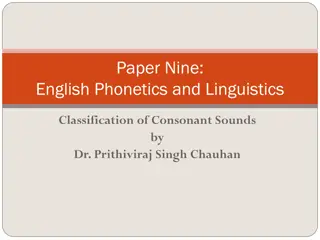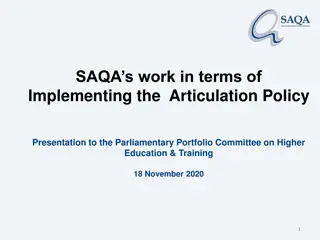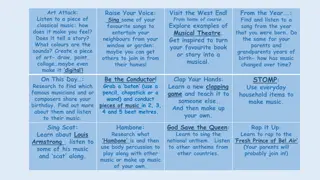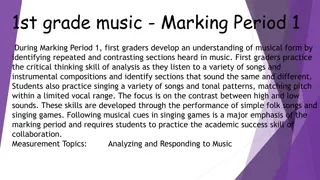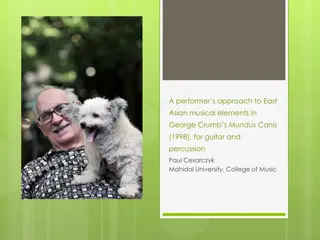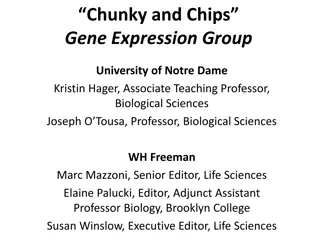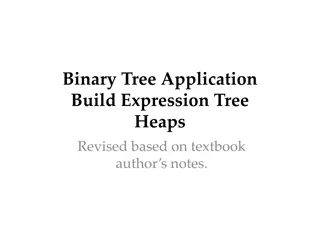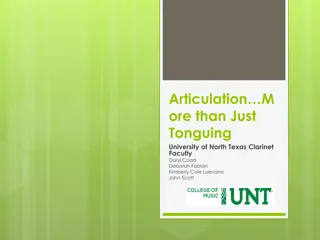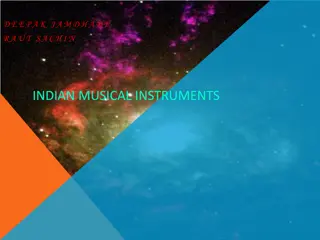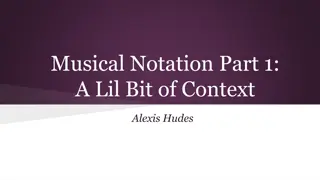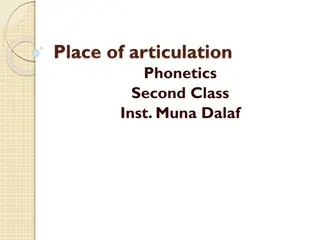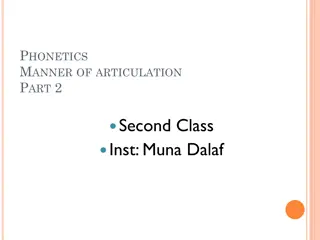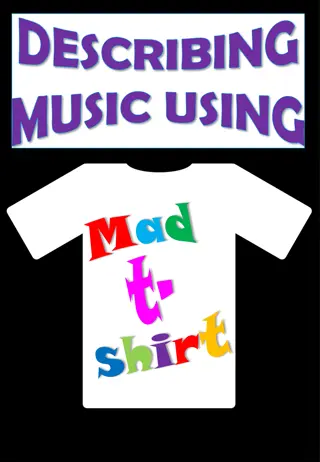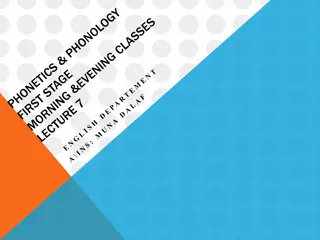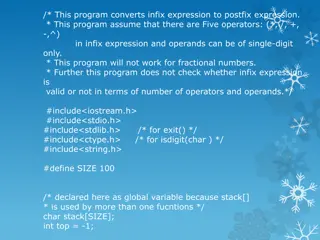Understanding Musical Expression: Dynamics, Articulation, and More
Musicians rely on a plethora of expressive markings, articulations, and dynamic markings to bring a piece of music to life. From volume dynamics to marking dynamic changes over time, this guide delves into the nuances of musical expression like fortissimo, pianissimo, crescendo, and more. Learn how to interpret and apply these markings accurately in your musical performances.
Download Presentation

Please find below an Image/Link to download the presentation.
The content on the website is provided AS IS for your information and personal use only. It may not be sold, licensed, or shared on other websites without obtaining consent from the author. Download presentation by click this link. If you encounter any issues during the download, it is possible that the publisher has removed the file from their server.
E N D
Presentation Transcript
Expression, Articulation, and more Dynamics Expressive markings Phrasing Articulations, bow markings Repeats, endings, and codas
Musicians rely on written music to inform them on every detail Volume Speed Style Creation of sound When to start/stop There are musical terms and symbols used to inform the musician.
Volume Dynamics: markings to determine volume Mostly Italian words. Fun fact:
The Fortepiano Unlike harpsichord, the volume of the pitch produced could be altered by the pressure of the player s fingers. Innovative In other words, the Loudsoft. Forte = loud Piano = soft
Dynamics to declare volume at any point pp Pianissimo p piano mp mezzopiano mf mezzoforte f forte ff fortissimo Very soft soft medium-soft medium-loud loud very loud Important: Dynamic markings last from the moment they appear until a change is made by writing another dynamic marking. Printed music is all about saving ink
Markings to show dynamic change across time Instead of writing: Save ink, save time, be clearer with:
Markings to show dynamic change across time Crescendo: to gradually get louder Decrescendo: to gradually get softer Diminuendo: to get softer quickly Mezzo di voce: cresc-decresc hairpins, back-to-back. Can appear as hairpins or as text: cresc. decresc. dim. Subito: suddenly
Practice On your copy of Twinkle Twinkle Little Star, add dynamic markings that match what you hear. Interpret in the most accurate way possible. Note: when writing dynamics on music, the markings go: Above the staff when lyrics are present Below the staff when no lyrics are present Between staves when writing for a chordal instrument (piano, organ, etc.)
Expressive markings/Phrasing Breath marks: Apostrophe to designate a break/physical breath, dotted slur to specify no break or breath (NB also used) Perform this example.
Caesura Expressive markings/Phrasing Caesura/GP: translates as cease, general pause. Both indicate a silent pause before continuing onward. Fermata: hold the action below for a length determined by conductor. Fermata
Articulations Articulation: the manner in which sound is created Staccato: short, disconnected Legato: smooth, connected Accents: to be played with force/emphasis Tenuto: also, perform pitch for its full duration
Practice On your second copy of Twinkle Twinkle Little Star, add articulation markings at your leisure. Afterwards, trade with the person next to you and perform his or hers. Be sure to: Include one breath mark in an odd location. Include one caesura or fermata. Alternate between legato and staccato in one measure. Include at least two other markings of your own.
